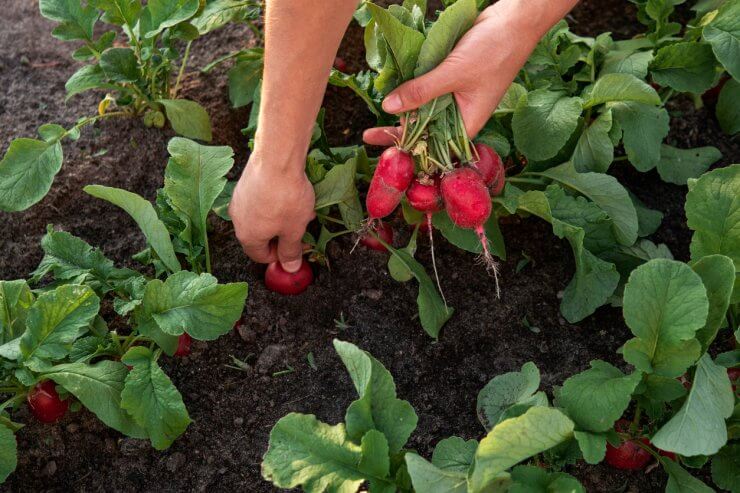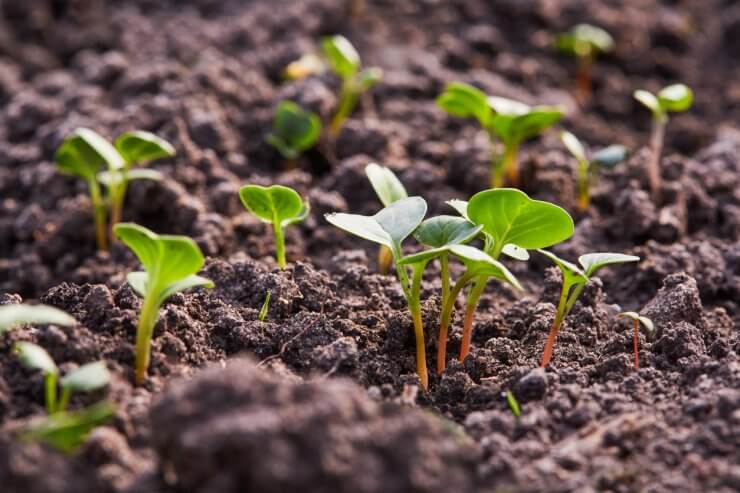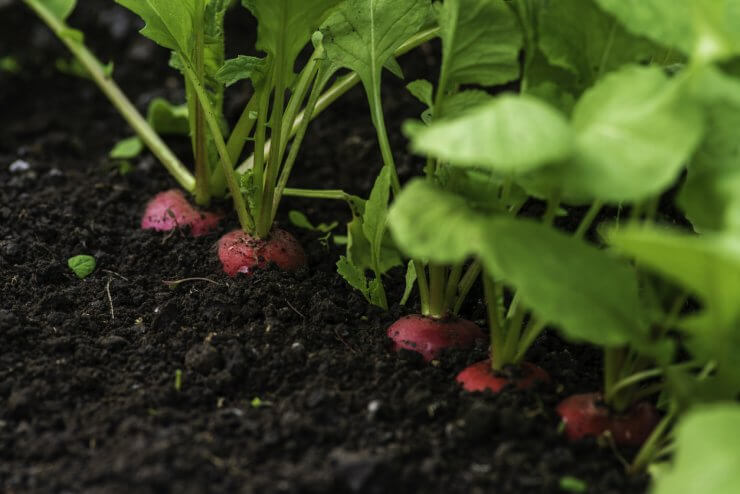
Nothing’s more frustrating than eagerly pulling up your radish crop only to find massive, lush green tops attached to skinny, woody disappointments underground. If your radishes are producing gorgeous foliage but pathetic roots, you’re not alone–and more importantly, you’re not doomed to repeat this leafy letdown.
When radishes go “all top, no bottom,” they’re essentially throwing a botanical tantrum about their growing conditions. Radishes are what we call “photoperiod sensitive,” meaning they respond dramatically to day length. But here’s where it gets interesting: unlike many crops that bolt (go to seed) in response to long days, radishes can actually shift their energy allocation based on environmental stress.
The plant’s survival instinct kicks in when conditions aren’t ideal. Instead of focusing energy on developing that crisp, peppery root we’re after, the radish doubles down on leaf production to maximize photosynthesis and ensure species survival. It’s actually quite clever from an evolutionary standpoint, even if it’s maddening from a dinner plate perspective.
Heat: The Silent Root Killer
Temperature is your number one culprit when radishes refuse to bulb up properly. Radishes are cool-season crops that perform best when soil temperatures hover between 50–65°F. Once things heat up beyond 70°F, radishes essentially panic and redirect all their energy into leaves.
Here’s a fascinating tidbit: radishes originated in Southeast Asia, but the varieties we grow today have been selected for thousands of years to thrive in cooler conditions. This means they’ve actually evolved to be quite finicky about temperature, much more so than their wild ancestors.
For perfect timing, plant radishes 4–6 weeks before your last spring frost, or start your fall crop 8–10 weeks before the first expected frost. In many regions, this creates two narrow windows of opportunity, which explains why timing feels so critical with radishes.
The Nitrogen Trap

Overfertilizing is another classic mistake that sends radishes into leaf-production overdrive. Nitrogen is like espresso for plants, a little gives them energy, but too much makes them jittery and unfocused. When radishes get excessive nitrogen, they become what gardeners call “lazy,” producing luxurious foliage while neglecting root development.
The ideal approach is to work a balanced, low-nitrogen fertilizer into the soil before planting, then resist the urge to feed them again. Radishes are actually quite efficient at scavenging nutrients from soil, and their rapid growth cycle means they don’t need the feeding schedule of longer-season crops.
Give Them Room to Breathe (and Bulb)
Crowded radishes are stressed radishes, and stressed radishes make terrible roots. Each plant needs about an inch of space in all directions to develop properly. When they’re cramped, they compete aggressively for resources, and guess what wins? The leaves, because they’re the most efficient way to capture light and outcompete neighbors.
Here’s a nerdy detail that might surprise you: radishes practice something called “allelopathy”, they actually release chemical compounds that can inhibit the growth of nearby plants, including other radishes. This natural spacing mechanism works beautifully in the wild but falls apart when we sow seeds too thickly.
Soil Structure Secrets
Radishes need loose, well-draining soil to develop those perfect globes we’re after. Compacted or clay-heavy soil forces roots to work overtime just to penetrate the ground, leaving little energy for actual bulb development. The result? You guessed it, all that energy goes into the parts that can grow easily: the leaves.
For best results, work compost into your radish bed and ensure the soil is loose to at least 6 inches deep. Sandy loam is ideal, but any soil that crumbles nicely in your hand will work. If you’re dealing with heavy clay, consider growing radishes in raised beds or containers where you can control the growing medium.
Water Wisdom
Inconsistent watering creates another stress response that favors leaf over root development. Radishes need steady, moderate moisture, think of a wrung-out sponge rather than a swamp or desert. Fluctuating between bone dry and waterlogged confuses the plant’s internal signals about whether it’s time to bulk up roots or focus on survival through leaf production.
Variety Matters More Than You Think

Some radish varieties are naturally more prone to going to leaf, especially if they’re not well-suited to your climate. Long-season varieties like daikon need very specific conditions and are more likely to bolt or go leafy if those conditions aren’t met. For beginners, stick with reliable, quick-maturing varieties like Cherry Belle or French Breakfast, they’re much more forgiving of less-than-perfect conditions.
The secret to radish success lies in understanding that these seemingly simple vegetables are actually quite sophisticated in their environmental responses. Treat them like the cool-season specialists they are, give them proper spacing and soil conditions, and you’ll be rewarded with those satisfying, crunchy roots that make all the effort worthwhile.
Radishes are easy to grow and come in a variety of colors that span the entire rainbow. And did you know that how spicy a radish is, depends on when you harvest it? In our Radishes Gardening Guide, we’ll explain how to choose a radish variety and how to grow them in your garden, harvest them, and then enjoy them at your table.
Have you ever pulled up a radish and found nothing but leaves? What’s been your biggest challenge growing perfect radishes? Share your story with us in the comments.


 Previous
Previous

